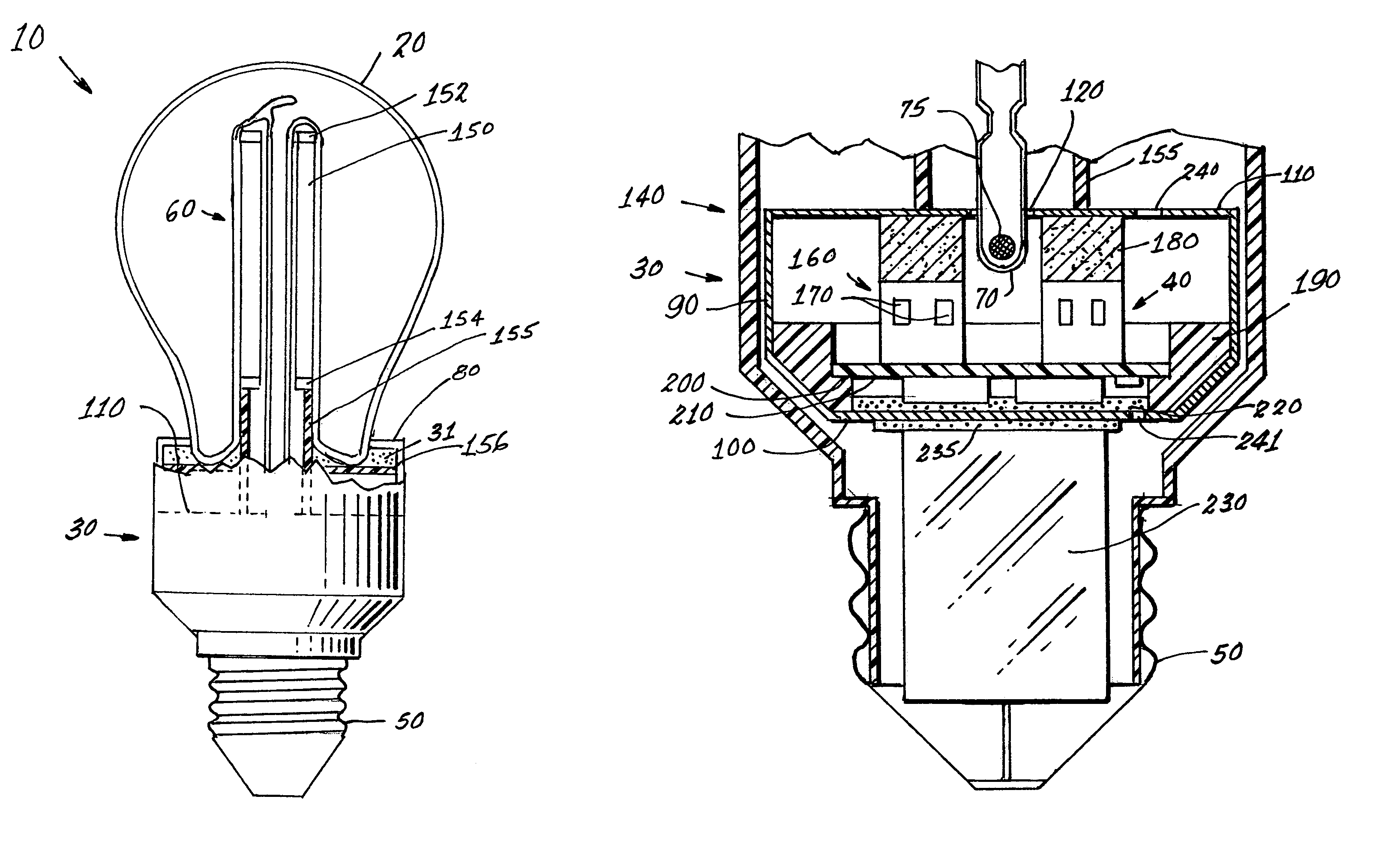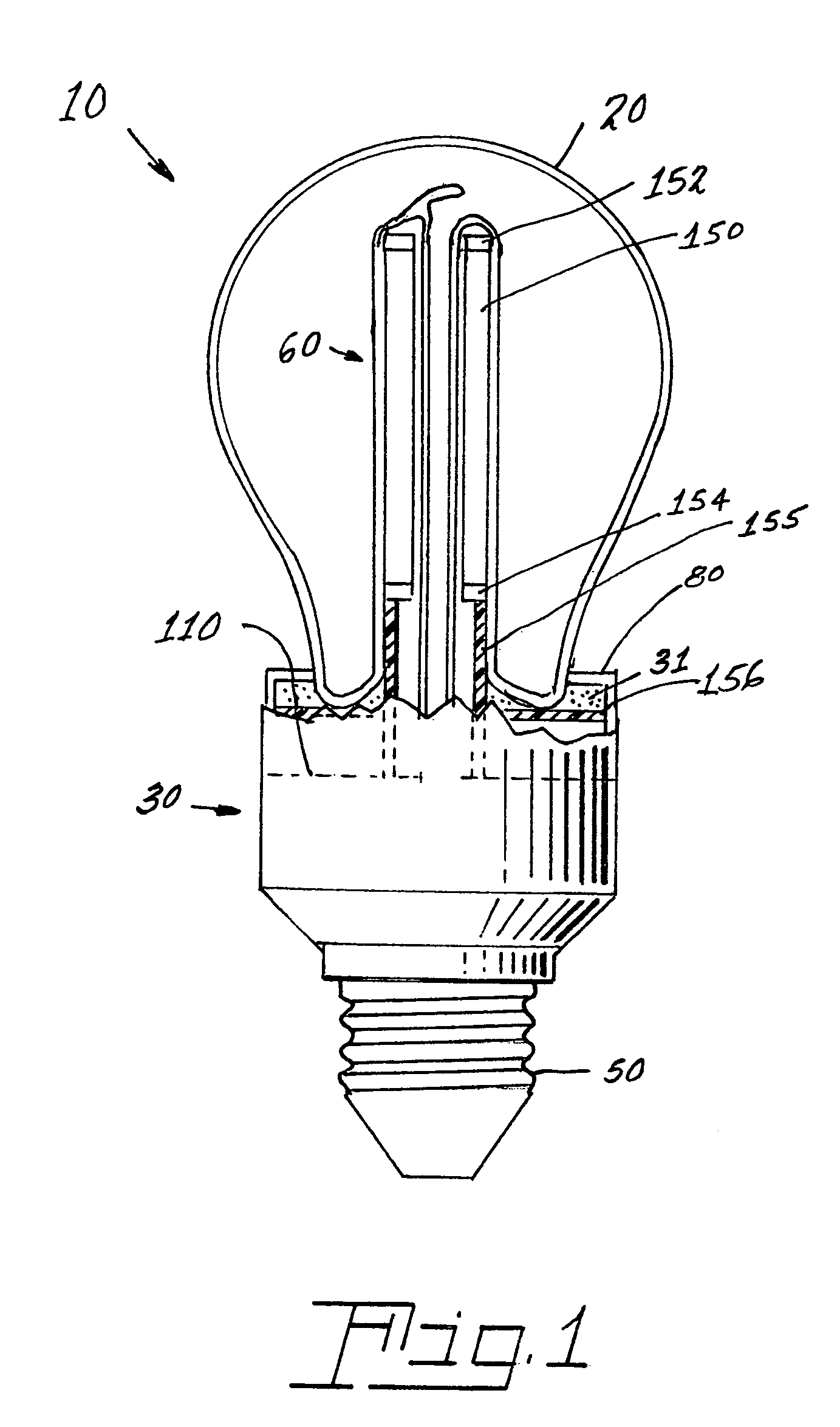Re-entrant cavity fluorescent lamp system
a fluorescent lamp and cavity technology, applied in the field of fluorescent lamps, can solve the problems of insufficient rf shielding for some uses, significant problems in producing higher lumen, and difficult hurdles for conventional electroded fluorescent lamps, and achieve the effect of superior rf shielding
- Summary
- Abstract
- Description
- Claims
- Application Information
AI Technical Summary
Benefits of technology
Problems solved by technology
Method used
Image
Examples
Embodiment Construction
[0012]For a better understanding of the present invention, together with other and further objects, advantages and capabilities thereof, reference is made to the following disclosure and appended claims in conjunction with the above-described drawings.
[0013]Referring now to the drawings with greater particularity, there is shown in FIG. 1 an electrodeless fluorescent lamp 10 having a burner 20, a ballast housing 30 containing a ballast 40 and a screw base 50 for connection to a power supply. A reentrant cavity 60 is formed in the burner 20 and an amalgam receptacle 70 containing amalgam 75 is formed as a part of the reentrant portion and in communication with the burner 20. A housing cap 80, formed of a suitable plastic, connects the burner 20 to the ballast housing 30 and a suitable adhesive 31 fixes the burner to the housing cap 80. An EMI cup 90 is formed as an insert to fit into the ballast housing 30, which also is formed of a suitable plastic, and has a bottom portion 100 and ...
PUM
 Login to View More
Login to View More Abstract
Description
Claims
Application Information
 Login to View More
Login to View More - R&D
- Intellectual Property
- Life Sciences
- Materials
- Tech Scout
- Unparalleled Data Quality
- Higher Quality Content
- 60% Fewer Hallucinations
Browse by: Latest US Patents, China's latest patents, Technical Efficacy Thesaurus, Application Domain, Technology Topic, Popular Technical Reports.
© 2025 PatSnap. All rights reserved.Legal|Privacy policy|Modern Slavery Act Transparency Statement|Sitemap|About US| Contact US: help@patsnap.com



